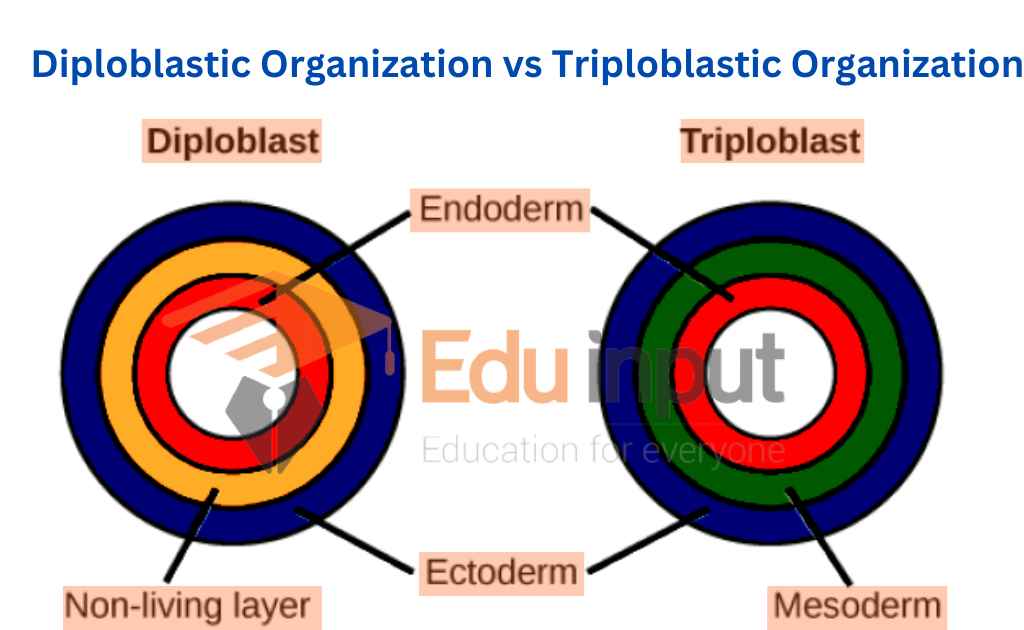Difference Between Diploblastic Organization And Triploblastic Organization
The difference between diploblastic and triploblastic animals is that diploblastic animals have only two germ layers – ectoderm and endoderm – whereas triploblastic animals have a third germ layer, called mesoderm, in addition to ectoderm and endoderm. This third layer allows triploblastic animals to develop complex organs.

What is a Diploblastic Organization?
Animals in which the cells are arranged in two embryonic layers, external ectoderm, and internal endoderm, are called diploblastic animals. An example of a diploblastic animal is a coelenterate. These animals contain 2 major tissue layers which are the outer layer (the ectoderm), and the inner layer (the endoderm).
What is Triploblastic Organization?
Triploblasts are a type of animal which develop from three embryonic germ layers – an inner layer (endoderm), an outer layer (ectoderm), and a middle layer (mesoderm). The ectoderm eventually becomes the brain, spinal cord, lens of the eye, and hair.
Difference Between Diploblastic Organization and Triploblastic Organization
Here are the key difference between diploblastic organization and triploblastic organization:
| Diploblastic Organization | Triploblastic Organization |
| 1. Diploblastic animals belong to the division Radiata. They have radial symmetry. | Triploblastic animals belong division Bilateria. |
| 2. They are diploblastic. Their body is composed of two layers. Le ectoderm and endoderm. Jelly-like non-cellular mesoglea is present between these two layers. | The body of these animals is made up of three layers, ectoderm, mesoderm, and endoderm. These layers do not remain separate distinct layers after development. They form different structures. |
| 3. They show a lesser degree of specialization. They do not form specialized organs. | The cells of these animals show greater degree of specialization. They have specialized organs and organ systems. |
| 4. There is no special transport system for these animals. Transport of material takes within the body by diffusion. | They have a special transport system. The blood vascular system is present in most animals. |
| 5. There is no central nervous system in 5 of these animals. A neuron network is present. | The central nervous system is present. The integumentary (membranous) and nervous systems develop from ectoderm. |
| 6. Mesoderm is absent in them. | Mesoderm gives rise to muscular, skeletal, and reproductive systems. |
| 7. There is only one cavity in the body. It is called the gastrovascular cavity. It is used for digestion. | Endoderm forms the lining of digestive system and glands of the digestive system like liver. |
| 8. They have a sac-like digestive system. They have only one opening called h mouth. It is used both for the entry of food p and removal of wastes. | The digestive system is tube-type. They have a mouth at the anterior end and anus at the posterior end. |
| 9. Coelom is absent in them. | The triploblastic animals may be acoelomate pseudocoelomate or coelomate. |
| 10. This group includes Phylum Cnidaria. | This group includes Phylum Platyhelminthes, Phylum Nematoda, Phylum Annelida, Phylum Arthropoda, Phylum Mollusca, Phylum Echinodermata, and Phylum Chordata. |

 written by
written by 




Leave a Reply